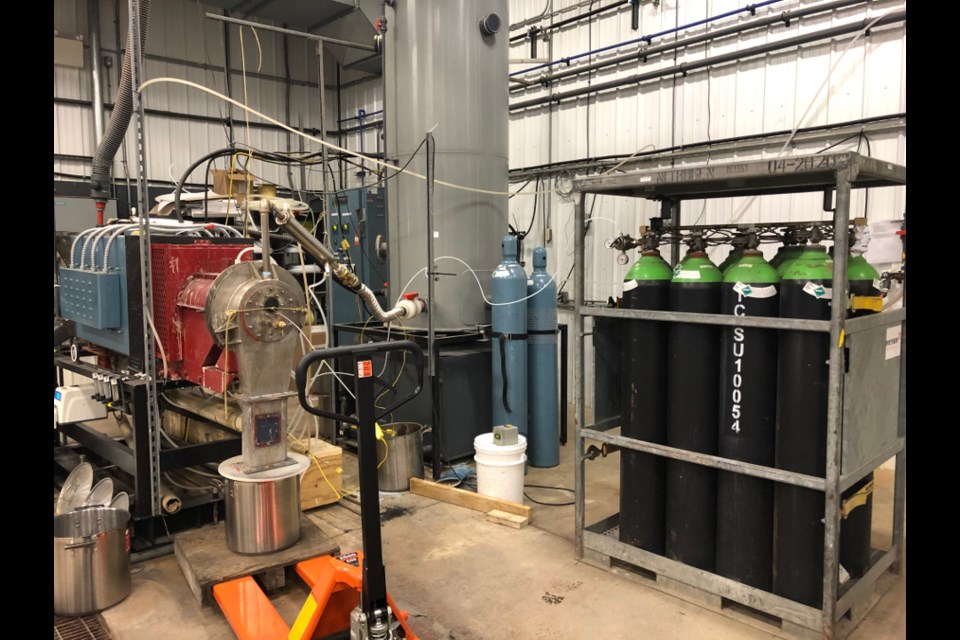A First Nation clean technology company in northwestern Ontario believes it has a green solution to clean up contaminated environments.
Carbonix, a Fort William First Nation-based firm, is developing a proprietary process to use activated carbon to treat industrial waste streams and clean up contaminated environments.
The privately owned company sees substantial opportunities surrounding abandoned mines in Ontario in supporting remediation efforts to treat tailings and acid rock drainage.
Carbonix CEO Paul Pede has high hopes 2020 will be an “inflection point” for the “nano media company” once they are able to roll out their technology across Canada, including an upcoming pilot project in Alberta to treat water and tailings in the oilsands.
“We look to have some good news coming out of that.”
The company developed a proprietary process that can convert large amounts of petroleum coke and boiler char – previously considered waste byproducts – into activated carbon.
Among the projects on their radar for 2020 in northwestern Ontario is tackling the mercury contamination issues in the Wabigoon-English River systems and investigating contamination from abandoned mine tailings.
For the last seven years, Pede has been working with Trent University’s chemistry department to take their process from the Peterborough campus’ lab to the field outside of the city. They’ve since set up a pilot plant at SGS Lakefield Research.
Last July, Carbonix received $3.1 million in federal funding to support their research over a two-year period and scale up the project.
Joining Pede on the management team is chief operating officer Marvin Pelletier, a member of Fort William First Nation, and chief engagement officer Darren Harper, a member of Red Sucker Lake First Nation.
Both Pelletier and Harper have worked as consultants brokering partnerships between First Nation communities and industry.
Pede began working on this technology in 2010 after a career in the renewable energy sector, where he first met Pelletier.
With the activated carbon industry being a roughly US$3-billion annual business, they soon realized there could be a whole prospective market in absorbents in this particular niche area.
Pelletier convinced Pede, who lives in Peterborough, to make First William First Nation the company’s headquarters based on the amount of potential tailings remediation work in hard-rock mining.
Generally, activated carbon – or charcoal – can be made by chemical or steam-treated processes to create a highly porous surface that can trap molecules from toxins and poisons through absorption.
Carbonix is keeping their thermal process a secret, but Pede said they can fine-tune their product to target specific molecules of a contaminant on a given site.
“Activated carbons are essentially a sponge at the nano level.”
Contrary to mainstream “cap-and-bury” methods of remediation, Pelletier said, “We’re looking at capture, lock in, and hold.”
To source feedstock within this region, they have an understanding with Resolute Forest Products in Thunder Bay to potentially use their power boiler ash.
“What we found out is that it was a very suitable product for conversion into activated carbon,” said Pelletier.
Their pipeline of projects includes Pickle Lake, where Carbonix has obtained a letter of support from the Ministry of Energy, Northern Development and Mines to work on a solution to handle the presence of arsenic in surface tailings from the former Central Patricia Mine in that community. Tailings were spread over multiple places at the former mine, which ceased operations in 1954.
The company has other irons in the fire for potential work with two First Nations in the Geraldton-Beardmore area to address similar arsenic issues.
And they have other letters of support from the Treaty 3 communities to look into mercury contamination in the English-Wabigoon River systems.
During the 1960s and 1970s, a pulp and paper plant in Dryden released tonnes of mercury into the Wabigoon River, which impacted fish populations and the Indigenous people who harvested them.
The province has set aside an $85-million trust to fund remediation work.
To further field-test their process, Pede said they’ve had “very preliminary conversations” with the Experimental Lakes research station, near Kenora, about doing a second phase of testing using sediment and water from the Wabigoon River.
Further west, Carbonix has also made inroads into Alberta in working with Suncor on a pilot plant to treat water used in the oilsands process, bring it up to provincial standards, and release it back into the environment.
Also high on their priority list is the Sudbury area.
“In particular, we are very interested in piloting a solution for sites such as the Long Lake Mine site,” said Pelletier.
While visiting northeastern Ontario last year, Pelletier visited Goat Island, near Manitoulin, where there is a substantial amount of waste coal from historic development activities that would provide perfect feed stock for this technology.
As an Indigenous company, Pelletier wants First Nation involvement in their projects as they gain traction across Canada.
Consultation with impacted First Nations is an essential part of any mine’s closure and reclamation process.
Pelletier firmly believes their approach will go a long way toward engendering trust with communities dealing with industrial legacy issues.
“Our approach is to go in and speak with impacted communities prior to ever proposing a project,” he said. “Having been involved with Indigenous engagement, we wanted to bring them along with the development of the technology, not bring them in at the end and convince them this is good for them.
“Remediation has always been looked at from a sheer cost perspective. I believe it can also be turned into an economic revenue tool while doing the remediation.”
The Drift magazine features profiles on the people and companies making important contributions to the Northern Ontario mining service and supply sector. It is published annually and distributed at the Northern Ontario Mining Showcase during the Prospectors and Developers Association of Canada (PDAC) conference in Toronto.



